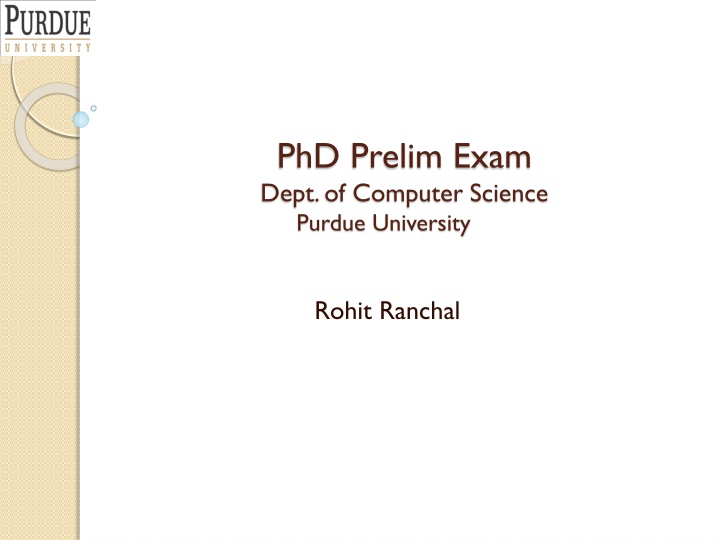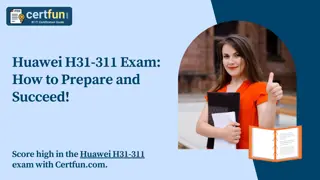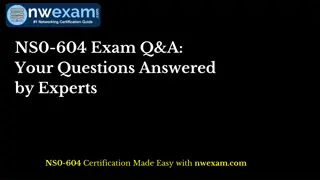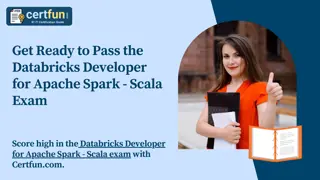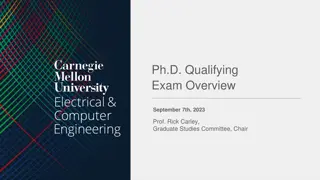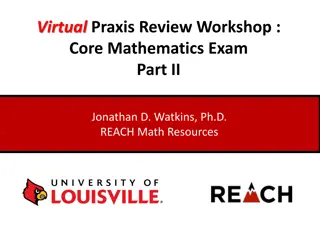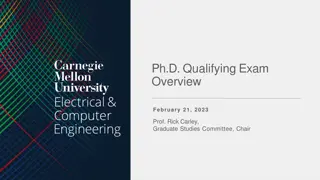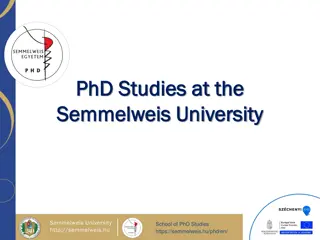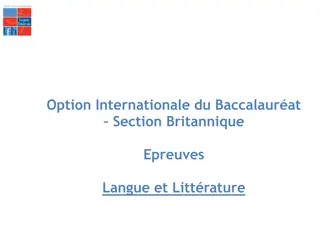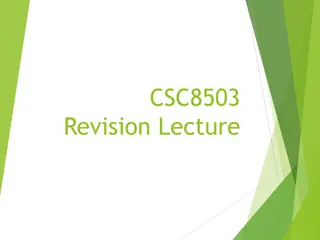PhD Prelim Exam
Rohit Ranchal presents a research proposal on data security and control in smart home environments, addressing issues such as loss of control, unauthorized access, and privacy breaches. The study aims to propose a solution to securely share sensitive data, control its dissemination, and minimize unnecessary disclosure to protect user information throughout its lifecycle.
Download Presentation

Please find below an Image/Link to download the presentation.
The content on the website is provided AS IS for your information and personal use only. It may not be sold, licensed, or shared on other websites without obtaining consent from the author.If you encounter any issues during the download, it is possible that the publisher has removed the file from their server.
You are allowed to download the files provided on this website for personal or commercial use, subject to the condition that they are used lawfully. All files are the property of their respective owners.
The content on the website is provided AS IS for your information and personal use only. It may not be sold, licensed, or shared on other websites without obtaining consent from the author.
E N D
Presentation Transcript
PhD Prelim Exam Dept. of Computer Science Purdue University Rohit Ranchal
Outline Motivation Problem Statement Related Work Managed Information Object Active Bundle Scheme Extending Active Bundle Scheme Identity Management References 2
Motivation E existing O ongoing Smart Home [2] F future 3
Motivation Smart Home Data Flow Model 4
Motivation Problems with the current model Loss of control No access control No sharing control Information gathering/aggregation Information selling to interested parties Information disclosures for Subpoenas Hacking attacks Insider abuse Lack of trust 5
Motivation Any non-trivial application requires protecting confidentiality of disseminated data Examples Pervasive healthcare monitoring Smart Grid Service Oriented Architecture (SOA) Digital Rights Management (DRM) Cloud Computing Digital Supply Chain Management Data sharing in Military scenarios Smart Homes 6
Problem Statement Research Problem How to securely share sensitive data, control its dissemination, minimize unnecessary disclosure and protect them throughout their lifecycle? Research Goal Propose a solution to control data disclosure and minimize the risk of unauthorized disclosure 7
Related Work Policy enforcement at owner Traditional approach uses encryption for protection (interactive protocols) e.g. Servers A lot of exchange of messages Source can become bottleneck Not scalable Digibox [5] uses multiple keys 8
Related Work Policy enforcement in the middle Trusted Third Party e.g. pub/sub Single point of failure Information aggregation - caches and stores data Can sell data to interested parties Data disclosure during Subpoenas Prone to hacking attacks and insider abuse Casassa Mont et al [9] uses time vault service 9
Related Work Policy enforcement at receiver Requires a Trusted component Eg Digital Rights Management solutions, Document-sharing solutions Adobe, Microsoft etc Distribution issues of Trusted component Not applicable on unknown or untrusted hosts Montero et al [6] uses sticky policies 10
Related Work Data are considered passive entities unable to protect themselves Require another active and trusted entity to protect them a trusted processor, a trusted memory module, a trusted application or a trusted third party 11
We challenge this assumption by proposing an approach that transforms passive data into an active entity that can protect itself 12
Managed Information Object (MIO) MIOs [10] enclose data and policies together Traditionally used in Networks (for resource management in SNMP, content and policy based routing) MIO provides capabilities to control the behavior of data in a trusted domain 13
Managed Information Object (MIO) MIO Client-server architecture architecture Asynchronous, reduces network load What if environment is untrusted or unknown? Policies alone are not sufficient 14
Secure MIO Need a protection and policy enforcement mechanism Add a VM layer that enforces policies and protects data Secure MIOs are realized as Active Bundles [12] Data-centric approach - Data is protected from within instead of outside 15
Active Bundle Active bundle (AB) Encapsulation mechanism for protecting data Includes metadata used for controlled dissemination Includes Virtual Machine (VM) Policy enforcement mechanism Protection mechanism Active Bundle Operations Self-Integrity check Filtering Selective dissemination based on policies Apoptosis Self-destructs AB completely 16
AB Creation and Distribution AB information disclosure Active Bundle Destination User Application Active Bundle Active Bundle (AB) Active Bundle Creator Audit Services Agent (ASA) Security Services Agent (SSA) Directory Facilitator Trust Evaluation Agent (TEA) Active Bundle Coordinator Active Bundle Services 17
Enabling AB A Trust-based Approach for Secure Data Dissemination in a Mobile Peer-to-Peer Network of AVs. B. Bhargava, P. Angin, R. Ranchal, R. Sivakumar, M. Linderman, A. Sinclair, In International Journal of Next Generation Computing 2012. 18
Problems with current scheme Relies on TTP (TTP related issues) Unable to do selective dissemination VM is prone to attacks from the host executing the VM. Simulates policies but no work on inclusion of policies No performance evaluation Not tested in any application scenario 19
Improving the AB scheme Improve the AB scheme by making it independent of TTP Provide a mechanism for policy based selective dissemination Include actual policies in the scheme Providing resilience against malicious hosts Application specific development and experimentation 20
Improving AB Scheme Decrease dependence on TTP and provide selective dissemination Organize data in AB into separate items Encrypt each item with a different key Use Shamir s threshold secret sharing technique [16] to split each of the decryption keys into N shares Set a threshold t such that t shares are required for key reconstruction Store the key shares in a distributed hash table (DHT) built on top of P2P system (Vuze) Each share is stored at a random node 21
DHT scheme for AB AB Key distribution AB Key reconstruction 22
Advantages of using DHT Huge scale - millions of geographically distributed nodes Decentralized individually owned nodes with no single point of trust Load reduction and Asynchronous communication no synchronization issues Hard to deduce all the shares (atleast t) Hard to compromise all the nodes that store the shares Use continuous splitting to protect against dynamic adversaries (Zhou et al [30]) 23
Improvement in DHT DHT loses key shares over time Nodes crash or leave Republish the shares for availability Use a hybrid DHT (combination of reliable* DHT (openDHT in planet lab) and public DHT) Split K into K and K Split K into n shares and store in reliable DHT Split K into n shares and store in public DHT 24
AB Policies Extend the AB approach with a formal language for specifying policies Developed simple XML based policies and their enforcement Need efficient policy negotiation mechanism OASIS eXtensible Access Control Markup Language (XACML) [17] Role Based Access Control (RBAC) [18] 25
AB Policies A sample XML based policy constructed for specifying sensitive data using custom defined DTD <data type="target"> <property name="color">blue</property> <property name="coordinates">location</property> <property name="type">type</property> </data> <policy> <metaData type="Sensitivity"> <data type="target" property="color" value="1" /> <data type="target" property="coordinates" value="2" /> <data type="target" property="type" value="3" /> </metaData> <metaData type="AccessControl"> </metaData> <metaData type="Dissemination ></metaData> <metaData type="Trust">0</metaData> <metaData type="Role">Role</metaData> </policy> 26
Protection against Malicious Hosts Use TPM [7] to ensure that host is not already compromised Intertwine code and data together hide data within the code to make it incomprehensible Use polymorphic code [25] code changes itself each time it runs but its semantics don't change Can store the control flow information in random DHT nodes Perform code obfuscation - hide data and real program code within a scrambled code 27
Application specific Experimentation Extend the AB prototype with the proposed enhancements How variations in splitting affects the performance of the system (Average Refresh time for shares) Effect of using multiple DHTs on the performance Adapt the scheme for an application specific scenario like Smart Home Performance evaluation of the scheme under varying network conditions Compare the size of an active bundle with data size in other approaches Compare the time of the AB scheme with other approaches 28
Active Bundles Capabilities Controlled and Selective Dissemination: Control the dissemination and selectively share the data based on the policies Quantifiable Data Dissemination: Track the amount of data disclosed to a particular host and decide to further disclose or deny data requests Contextual Dissemination: Context aware dissemination Dynamic Metadata Adjustment: Update the policies based on a context, host, history of interactions, trust level etc. 29
Active Bundles Do not require hosts to have a policy enforcement engine or a trusted component Doesn t rely on a TTP No trusted destination host assumption works on unknown hosts 30
References Y. Gall, A. Lee and A. Kapadia, PlexC: A Policy language for exposure control, in proceedings of SACMAT 2012. S. Helal, W. Mann, H. El-Zabadani, J. King, Y. Kaddoura, & E. Jansen, The gator tech smart house: A programmable pervasive space, Computer, 38(3), 50- 60, 2005. K. L. Courtney, "Privacy and senior willingness to adopt smart home information technology in residential care facilities," Methods of information in medicine, 2008. J. Park, R. Sandhu, J. Schifalacqua, Security Architectures for Controlled Digital Information Dissemination , Proc. 16th Annual Computer Security Applications, Dec. 2000, pp.224-233. O.Sibert, D.Bernstein, and D. Van Wie, DigiBox:Aself- Protecting Container for Information Commerce, Proc. USENIX Workshop on Electronic Commerce, New York, Jul. 1995 pp. 15-15. S. Montero, P. Di az, I. Aedo, J. M. Dodero, Towards Accountable Management of Identity and Privacy: Sticky Policies and Enforceable Tracing Services, Proc. of the 14th International Workshop on Database and Expert Systems Applications (DEXA), Prague, Czechia, Sep. 2003, pp. 377 382. Trusted Computing Group, Cloud Computing and Security A Natural Match, April 2010. Online at: http://www.trustedcomputinggroup.org/resources/cloud_computing_and_security__a_ natural_match 1. 2. 3. 4. 5. 6. 7. 31
References B. Parno, Trust Extension as a Mechanism for Secure Code Execution on Commodity Computers, Ph.D. Thesis, Carnegie Mellon University, Pittsburgh, PA, May 2010. M. Casassa Mont, K. Harrison, M. Sadler, The HP Time Vault Service: Innovating the Way Confidential Information is Disclosed, at the Right Time, Sep. 2002. Online at: http://www.hpl.hp.com/techreports/2002/HPL-2002-243.pdf J. P. Loyall, et al. "QoS enabled dissemination of managed information objects in a publish-subscribe-query information broker." SPIE Defense, Security, and Sensing. International Society for Optics and Photonics, 2009. Managed Object, Wikipedia. http://en.wikipedia.org/wiki/Managed_object L. ben Othmane and L. Lilien, Protecting privacy of sensitive data dissemination using active bundles," in World Congress on Privacy, Security, Trust and the Management of e- Business (CONGRESS '09), Aug. 2009, pp. 202-213. L. ben Othmane, Active bundles for protecting confidentiality of sensitive data throughout their lifecycle," Ph.D. dissertation, Western Michigan University, December 2010. D. B. Lange and M. Oshima, Seven Good Reasons for Mobile Agent, Communication of the ACM, vol. 42(3), Mar. 1999, pp.88- 89. 8. 9. 10. 11. 12. 13. 14. 32
References F. L. Bellifemine, G. Caire, D. Greenwood, Developing Multi-Agent Systems with JADE, John Wiley & Sons Ltd, West Sussex, England, 2007. A. Shamir, How to Share a Secret, Communications of the ACM, vol. 22(11), 1979, pp. 612 613. eXtensible Access Control Markup Language (XACML), Version 2.0; OASIS Standard, Feb. 2005. Available at http://www.oasis- open.org/committees/tc_home.php?wg_abbrev=xacml. G. Karjoth, M. Schunter, and M. Waidner, Platform for Enterprise Privacy Practices: Privacy-enabled Management of Customer Data. Proc. of the 2nd international Conference on Privacy Enhancing Technologies, San Francisco, CA, Apr. 2002, pp. 69- 84. T. Sander and C.F. Tschudin, "Protecting Mobile Agents Against Malicious Hosts," LCNS, Mobile Agent Security, pp. 44-60, 1998. M. Brenner, J. Wiebelitz, G. Voigt, and M. Smith, "Secret Program Execution in the Cloud Applying Homomorphic Encryption," in IEEE International Conference on Digital Ecosystems and Technologies, 2011. L. Carter, J. Ferrante and C. Thomborson, Folklore Confirmed: Reducible Flow Graphs are Exponentially Larger, Proc. of the 30th ACM Symposium on Principles of Programming Languages, New Orleans, LA, Jan. 2003, pp. 106-114. 15. 16. 17. 18. 19. 20. 21. 33
References S. Hohenberger, Lecture 18: Program Obfuscation, accessed in Feb. 2009. Online at: www.cs.jhu.edu/~susan/600.641/scribes/lecture18.pdf K Heffner and C Collberg, "The Obfuscation Executive," Information Security, vol. 3225, pp. 428-440, 2004. JObfuscator. [Online]. http://jobfuscator.sourceforge.net/ Polymorphic Code. Wikipedia. http://en.wikipedia.org/wiki/Polymorphic_code P. Angin, B. Bhargava, R. Ranchal, N. Singh, L. ben Othmane, L. Lilien, and M. Linderman, An Entity-centric Approach for Privacy and Identity Management in Cloud Computing, in 29th IEEE SRDS, 2010. R. Ranchal, B. Bhargava, L. Othmane, L. Lilien, A. Kim, M. Kang, and M. Linderman, Protection of Identity Information in Cloud Computing without Trusted Third Party, In: 29th IEEE SRDS, 2010. B. Bhargava, P. Angin, R. Ranchal, R. Sivajumar, M. Linderman, and A. Sinclair, A Trust based approach for Secure Data Dissemination in a Mobile Peer-to-Peer Network of AVs, IJNGC, 2012. Microsoft's Digital Rights Management Scheme - Technical Details, http://cryptome.org/ms-drm.htm Lidong Zhou, Fred B. Schneider, and Robbert Van Renesse. Apss: proactive secret sharing in asynchronous systems. ACM Trans. Inf. Syst. Secur., 8:259 286, August 2005. 22. 23. 24. 25. 26. 27. 28. 29. 30. 34
Thank you! 35
